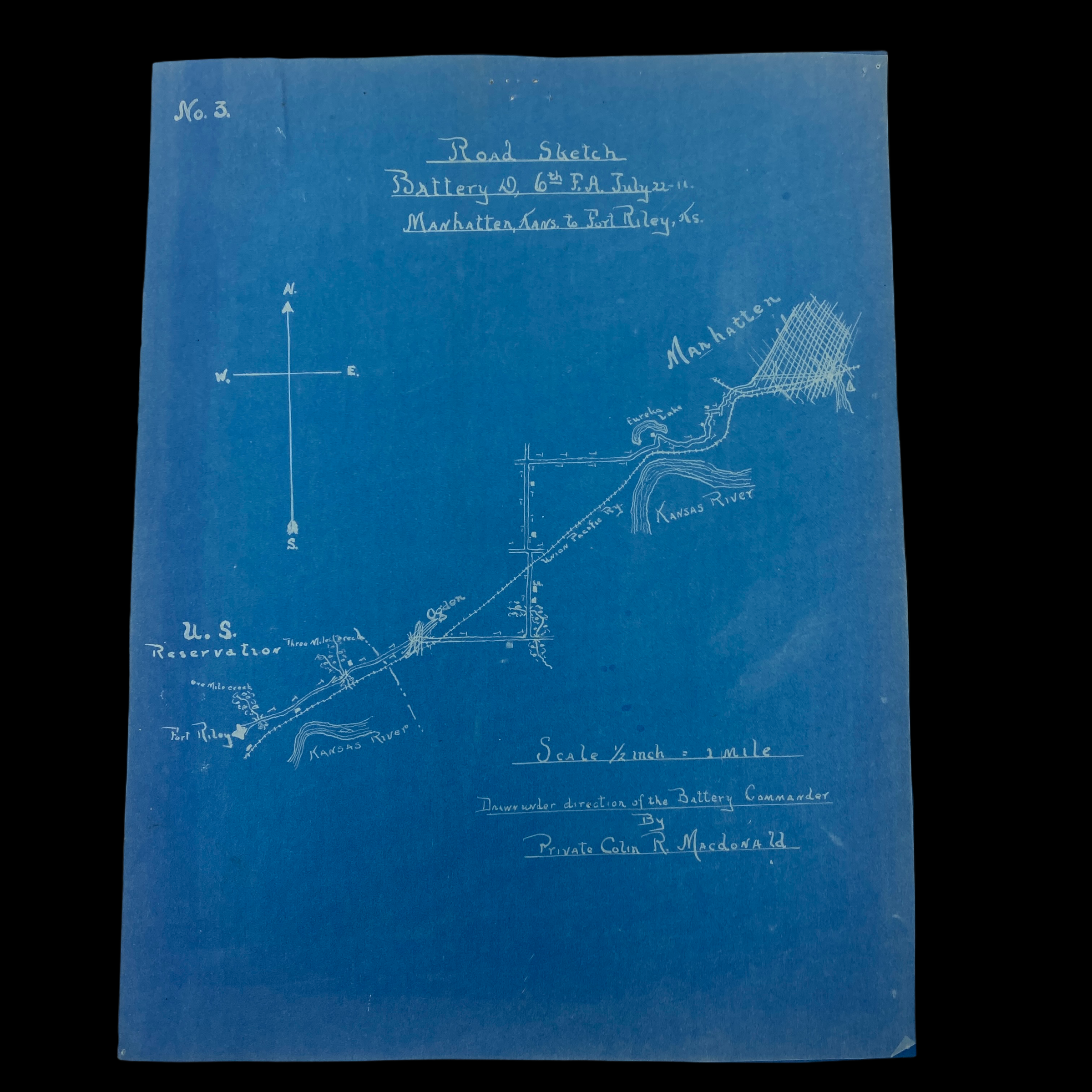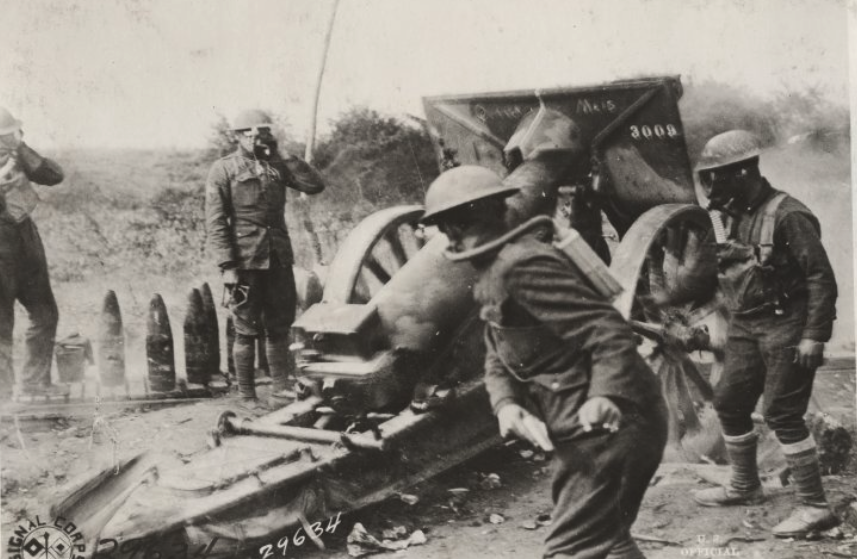Pvt. MacDonald WWI Original Blueprint No. 3 - Firing Lines of Battery D. 6th Field Artillery Brigade













Pvt. MacDonald WWI Original Blueprint No. 3 - Firing Lines of Battery D. 6th Field Artillery Brigade
Size: 8 x 10.5 inches
This incredible original World War era blueprint was drawn under the direction of the Battery Commander by Private Colin R. MacDonald. Titled “Road Sketch” is blueprint shows the set up of A.E.F. field artillery batteries as they trained at Fort Riley and Camp Funston. This training site was one of 16 across the country and could accommodate from 30,000 to 50,000 men. This WWI camp is known for Training the InFamous first Infantry Division as well as some of the most famous Field Artillery Brigade that were sent off to WWI. These Artillery Brigade with later participate in some the most famous operations including the Meuse-Argonne Offensive, St. Mihiel, Amiens Sector, Somme Offensive, Verdun Sector, Troyon Sector, and many more.
This specific WWI original blueprint showcases the set up and firing lines of “Battery D of the 6th Field Artillery Brigade during July of 1911. This blueprint was drawn by Private Colin R. MacDonald at a ½ inch scale which denotes 1 mile.
The exact AEF soldiers and 6th Field Artillery training on these lines were later awarded combat participation in:
Sommerviller Sector, France
Ansauville Sector, France
Cantigny Sector, France
Montdldier-Noyon Defensive, France
Cantigny Sector, France
Aissne-Marne Offensive, France
Saizerais Sector, France
St.Mihiel Offensive, France
Meuse-Argonne Offensive, France
Artillery During WWI:
The artillery of World War I, which led to trench warfare, was an important factor in the war, influenced its tactics, operations, and incorporated strategies that were used by the belligerents to break the stalemate at the front. World War I raised artillery to a new level of importance on the battlefield.
The First World War saw several developments in artillery warfare. Artillery could now fire the new high explosive shells, and throw them farther and at a higher rate of fire. Because of this, enemies in trenches were no longer always safe, and could constantly be fired upon. In some areas, artillery concentration was common, with several guns firing onto an area such as a line of trenches, each gun firing several rounds per minute for hours. Artillery barrages were also used before an infantry battle, to distract the enemy away from the place of attack, or the paths behind the lines were fired on so that enemy reinforcements could not safely reach the front lines.
Mortars were revived by the Germans because of their ability to shoot at an angle above 45 degrees, and they, therefore, could theoretically (although not often) drop shells directly in an enemy's trench before exploding, for maximum damage. Artillery shells were used for weapon emission by the German troops in 1915, and the Allies followed their example after the Second Battle of Ypres.
The United States lacked industry that could build artillery and was only able to do so in collaboration with European manufacturers. With the outbreak of the war in 1914, this collaboration came to an end as European manufacturers focused on equipping their home countries. When the United States entered the war in 1917, it was clear that their artillery would not be sufficient, so the USA mostly used French and British artillery.
Fort Riley during WWI:
America's entry into World War I resulted in many changes at Fort Riley. Facilities were greatly expanded, and a cantonment named Camp Funston was built 5 miles (8 km) east of the permanent post during the summer and fall of 1917. This training site was one of 16 across the country and could accommodate from 30,000 to 50,000 men.
The first division to train at Camp Funston, the 89th, sailed for France in the spring of 1918. The 10th Division also received training at Funston but the armistice came before the unit was sent overseas.
The camp was commanded by Maj. Gen. Leonard Wood. A Military Officers Training Camp was established in the Camp Whitside area to train doctors and other medical personnel.
Following the war, the War Department directed service schools be created for all arms of service. As a result, in 1919, the Mounted Service School, as it was known since 1907 and which had ceased to function during the war, was re-designated as the United States Army Cavalry School. The change was sudden and abrupt. The new school met the need for courses both broader in scope and more general in character. The Cavalry unit at camp Funston was the 2nd cavalry Regiment who provide the training and cavalry tactics to new cavalry officers. The current post headquarters was in the 1920s post hospital.